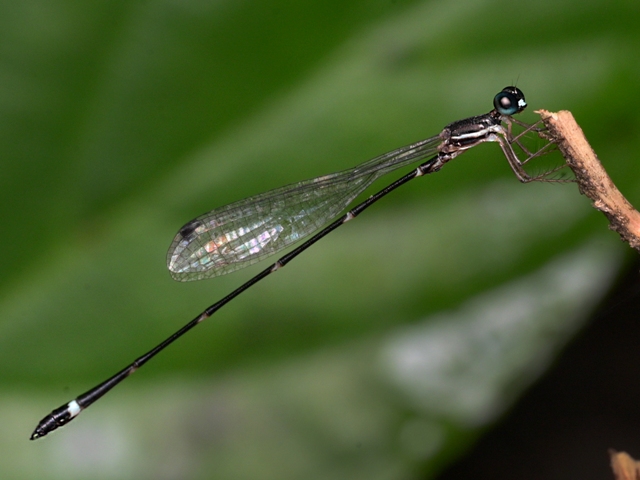MIT-WPU Researchers make a breakthrough discovery of a new damselfly species in Southwestern Ghats of Kerala

New Delhi, 30 September 2023: In a outstanding discovery that sheds mild on the vital state of our planet’s ecosystems, MIT-WPU researchers have launched the world to the ‘Armageddon Reedtail -Protosticta Armageddonia ‘ a newly unearthed damselfly species. This new species, with its ominous moniker, serves as a stark reminder of the ecological disaster our world faces as a result of rampant habitat loss and local weather change. Experts are utilizing this discovery as a highly effective name to motion for world leaders, urging them to handle the pressing points of world warming and their catastrophic impression on biodiversity.
The revelation of this newfound species has been formally documented in the esteemed International Journal of Odonatology, a publication affiliated with the Worldwide Dragonfly Association primarily based in the United States. Furthermore, the discovery has been meticulously recorded and registered with the Zoological Survey of India, Pune workplace, underscoring its significance in the scientific neighborhood. The daring expedition staff, comprising the experience of Dr. Pankaj Koparde, Assistant Professor, Department of Environmental Studies at MIT-WPU, the analysis prowess of Arajush Payra, a devoted PhD Scholar at MIT-WPU, the passion of Ameya Deshpande, an achieved MSc Environmental Science Student at MIT-WPU, and the eager eye of Reji Chandran, a seasoned Wildlife Photographer hailing from Kerala, performed a pivotal function in this momentous achievement.
The newfound species reveals a charming darkish brown to black physique with vibrant greenish-blue eyes, and it options delicate pale blue markings on half of its eight stomach segments. Its unique habitat selection is main montane streams, the place it thrives beneath dense cover cowl. The title Armageddon Reedtail is a direct reference to the idea of “Ecological Armageddon,” a time period used to explain the devastating decline of insect populations around the globe. This phenomenon, sometimes called the “Insect Apocalypse,” has far-reaching penalties for complete ecosystems, as bugs play essential roles in pollination, nutrient biking, and as a meals supply for different animals.
Dr. Pankaj Koparde, Asst. Prof at MIT-WPU and Lead Researcher for the Armageddon Reedtail discovery, underscores the gravity: “The naming of this new species will not be merely an instructional train; it’s a determined plea for consideration. Just as this species faces the risk of extinction as a result of habitat loss and altering environmental circumstances, numerous different endemic and endangered bugs are on the brink of vanishing without end. We are standing on the precipice of an ecological disaster, and pressing motion is required to reverse this course. We want a collaborative effort involving scientists, conservationists, policymakers, and the general public to fight local weather change and shield our planet’s biodiversity.”
Mr. Reji Chandran, a distinguished wildlife photographer and staff member who first noticed the species, echoed Dr. Koparde’s sentiments, stating, “I’ve seen the forests of the Western Ghats change quickly as a result of rampant growth and habitat loss. The discovery of Armageddon Reedtail serves as a symbolic illustration of the broader disaster we face and we have to do one thing about it earlier than it’s too late.”
“The new Protosticta species is completely different from its congeners primarily based on numerous morphological options. Keying it out was a troublesome process however we now have a readability about its taxonomy. I consider that our discovery will probably be a milestone in Indian odonatology,” concluded Arajush Payra, PhD Scholar, MIT-WPU, entomologist and lead writer.
The case of Armageddon Reedtail serves as a solemn reminder that we’re at a crossroads. The decisions we make now will decide the destiny of numerous species and the well being of our planet for generations to come back. It’s a name to motion that resonates not solely throughout the scientific neighborhood however with each particular person involved concerning the future of our world.